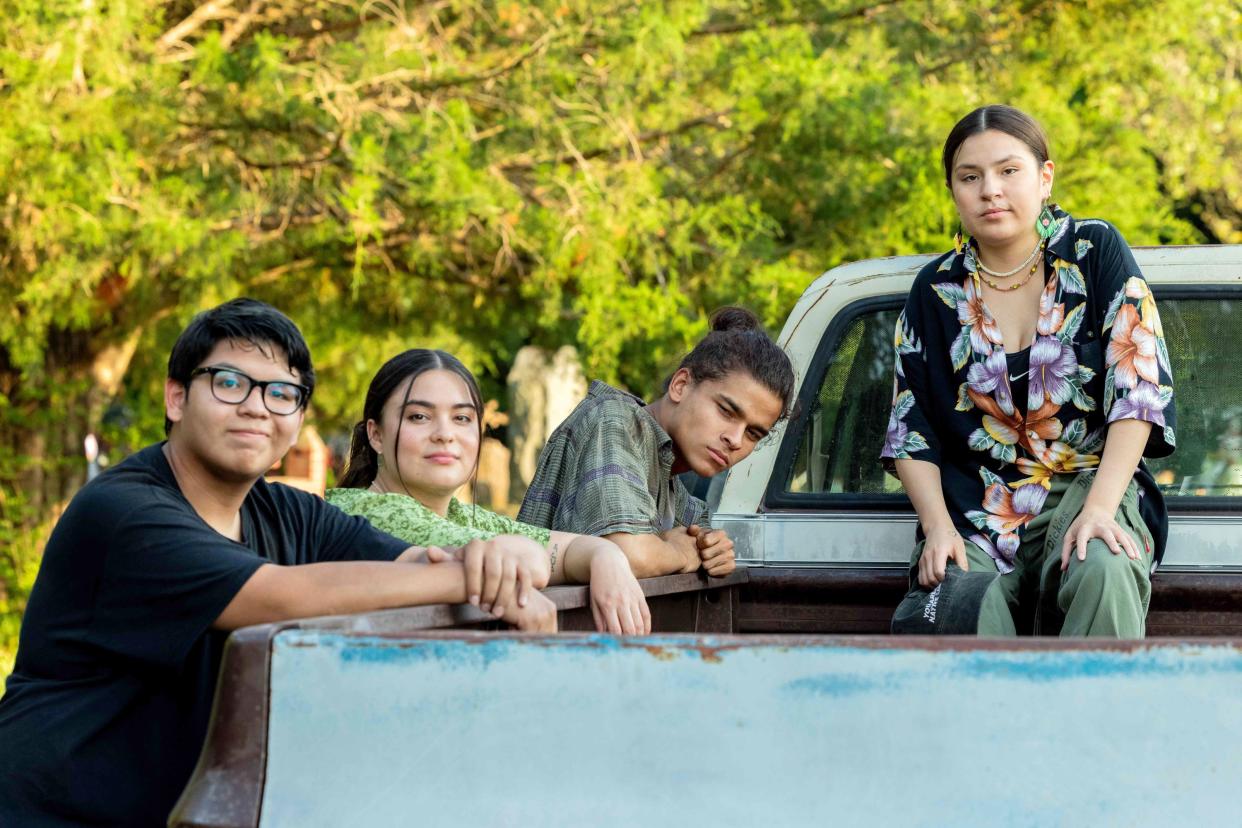How shows like 'Reservation Dogs' flipped the script on Native representation on TV

Heading into the 2024 Emmys on Sunday, FX series Reservation Dogs faces a bittersweet moment.
The show about modern Native American teens is finally seeing notable recognition from the Television Academy — with first-time nominations that include Outstanding Comedy Series and a historic Lead Actor nod for D’Pharaoh Woon-A-Tai. But the series wrapped its third and final season last fall, saying goodbye to critically acclaimed characters that American audiences weren’t used to seeing onscreen.
This is the second Native-focused show to recently sign off from streamers, after Peacock comedy Rutherford Falls said goodbye in 2022 — particularly devastating given that in pre-2020 TV seasons, Native Americans accounted for “virtually zero” jobholders in the industry.
Was this boost in onscreen representation just a tease?
“Most people have a sense of what Native representation looked like prior to 2020, which is severe underrepresentation and very frequent stereotyping,” Soraya Giaccardi, senior researcher at USC Norman Lear Center’s Media Impact Project and lead author of its August report Native Representation on Scripted Television in partnership with social justice organization IllumiNative, told Yahoo Entertainment. That stereotyping has included onscreen images of the “bloodthirsty warrior” or “needy indigent,” according to the study.
The report consisted of a “content analysis examining portrayals of 104 Native characters in 51 scripted television series set in the U.S.” Researchers also conducted a survey-based study that examined the impact of three streaming series featuring “prominent Native characters” — Reservation Dogs, from Indigenous creators Taika Waititi and Sterlin Harjo; Rutherford Falls, with Navajo showrunner Sierra Teller Ornelas; and Yellowstone, Taylor Sheridan’s popular western drama on the Paramount Network.
There is one notable difference between Yellowstone, which returns for its final episodes in November, and the previous two series: Native representation behind the camera as well as in front of it.
“Who you have behind the camera is going to impact the way you tell your stories and the stories that you choose to tell,” Giaccardi said. “One of the things that also makes Yellowstone stand out a little bit is that Yellowstone does have Native characters, but it’s not as focused on Native issues as, for example, Rutherford Falls or Reservation Dogs, where, for example, going with Rutherford Falls, there are frequent discussions in that show about privilege, about wrestling with one’s family legacy, about colonization.”
Native-led shows, which feature Indigenous directors, writers, producers as well as stars, give those storylines “main character” treatment and often delve deeper into issues that most viewers aren’t exposed to on TV.
Reservation Dogs also touched on the Indian Child Welfare Act, which protects against Native children being adopted or placed into non-Native homes without first seeking out Native alternatives — an issue that was up for debate just last year and ultimately upheld by the Supreme Court.
“Despite having its large audience and having Native characters, [Yellowstone] doesn’t have as much Native talent behind the scenes,” Giaccardi said. “So it was an opportunity for us to dig into how having talent behind the scenes might make a difference in not just how stories are told, but in how stories are received and how it impacts audiences.”
Findings from the report stated that viewers of Reservation Dogs were significantly less likely to agree that “the U.S. has done enough for Native peoples” and that “Native Americans must assimilate in order to advance in society.” For viewers of Rutherford Falls, they were more likely to agree that “sports teams should stop using Native American imagery.”
For viewers of Yellowstone, where Native characters often take a back seat or serve as antagonists to non-Native leads, the report found they were less likely to agree that “sports teams should stop using Native American Native imagery and appropriated Native traditions, songs, and chants in sports.” They were also less likely to agree that “the government should protect sacred Native American lands.”
“This analysis reaffirms our long-held belief that when non-Native people tell our stories — even those that may be well-intentioned — there’s a high risk that these stories will ultimately diminish Native autonomy or further stereotypes of our communities,” said Crystal Echo Hawk, founder and CEO of IllumiNative, in a statement. “While it’s refreshing to see that the shows analyzed deployed stereotypes infrequently, the truth of the matter is that since the beginning of Hollywood, Native peoples have been subjected to negative depictions of our culture and history, and these have real impacts on attitudes and policy support.”
In the few years since Reservation Dogs and Rutherford Falls started streaming, new Indigenous-led shows have been gaining a foothold. Dark Winds on AMC features an Indigenous cast alongside many Native writers, directors and producers. Echo on Disney+, led by Navajo showrunner Sydney Freeland, also made a splash with its Native cast, writers, directors and producers.
While the study points to some improvements in representation, there is still more work to do, Giaccardi said.
“On the one hand, I’m thrilled to see that, for example, our study showed more positive depictions of Natives in contemporary content and that it showed that viewing these storylines can have a real impact,” Giaccardi said. “That is wonderful and exciting to see, but it was also really important to me that we not unintentionally send this message that ‘Oh, Native representation is fixed. It’s all good now. The job is done.’”
Even though two groundbreaking Native-led shows have come to an end, she doesn’t think it signals the end altogether.
“There’s also a lot of hope,” Giaccardi added, “that this is just the start of something even bigger and better.”


